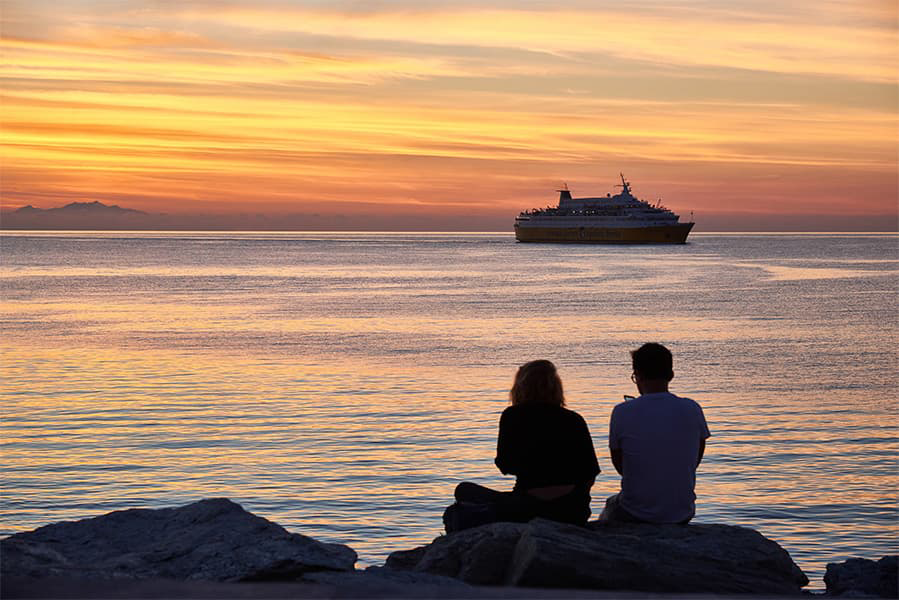Rinella – Vulcano
Ferries to Aeolian Islands
Rinella – Vulcano
Ferries to Aeolian Islands

The Rinella Vulcano ferry route connects Aeolian Islands with Aeolian Islands and is currently operated by 2 ferry companies. The Liberty Lines Fast Ferries service runs up to 11 times per day with a sailing duration of around 59 minutes While the Siremar service runs up to 8 times per week with a duration from 2 hours.
So that’s a combined 13 sailings on offer per day on the Rinella Vulcano route between Aeolian Islands and Aeolian Islands. Compare now and get the best fare at the time that you want to travel.
More routes than anyone else.

Compare fares, times & routes in one place.
Change plans easily with flexi tickets.

Book e-tickets & manage trips in-app.
Live ship tracking & real-time updates.

Top-rated customer support when you need it.
The small village of Rinella is located on the island of Salina, or Santa Marina Salina to give it its full name. Forming one of the Aeolian islands, it is around 140 km to the north east of Palermo and 70 km to the north west of Messina. Known for its caves and black beaches, and its square which was a filming location for the movie "Volcano", Rinella is also home to the island's second port.
The island is divided into three regions/towns. Santa Marina is on the eastern coast, Malfa is to the north and Leni is in the south west of the island. Rinella is located down towards the sea from Leni. Located above the village of Leni is Valdichiesa in the island's centre. Other villages on the island include Capo Faro, Pollara and Lingua.
Ferry services from the small harbour depart to Palermo and Milazzo on the island of Sicily.
The small Italian island of Vulcano lies in the Tyrrhenian Sea and is roughly 25 km off the coast of the island of Sicily. It is the southernmost of the eight islands that make up the Aeolian group of islands. The island has a number of volcanic centres, including one of four active, non-submarine, volcanoes in Italy. The most recent volcanic activity on the island was at the Gran Cratere at the top of the Fossa Cone, with the cone having grown in the Lentia Caldera in the middle of the island, and has had around 9 major eruptions in the last 6,000 years. However, since the eruption of the Fossa Cone between 1888 and 1890, which deposited around 5 meters of material on the summit, the island has been quiet. For the brave, visitors are able to walk to the crater of a volcano where you can observe smoke coming out of the ground! Apart from the volcanos the island is popular with tourists because of its hot springs which are only a short walk from the island's harbour.